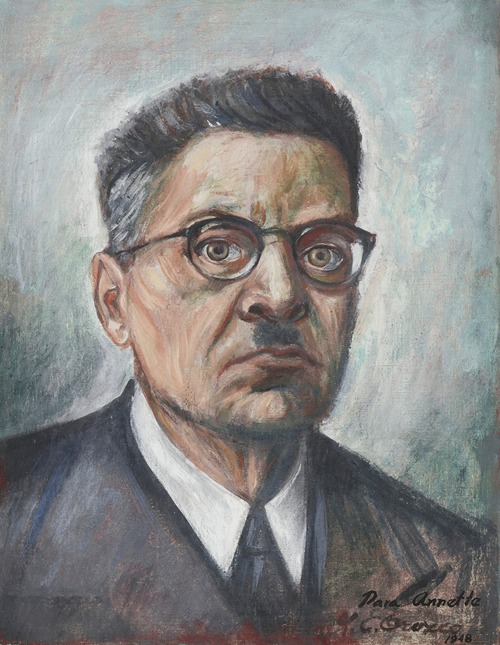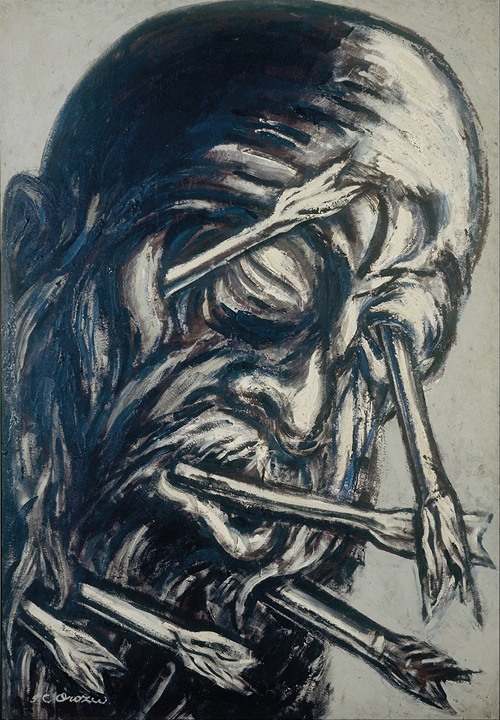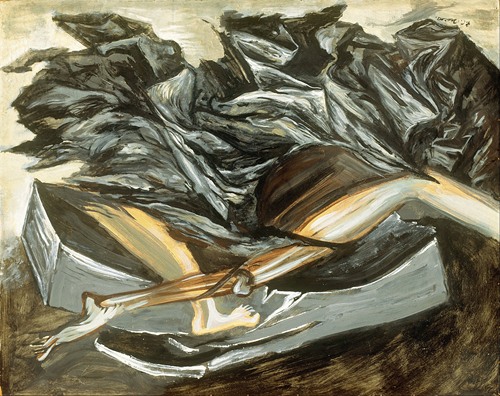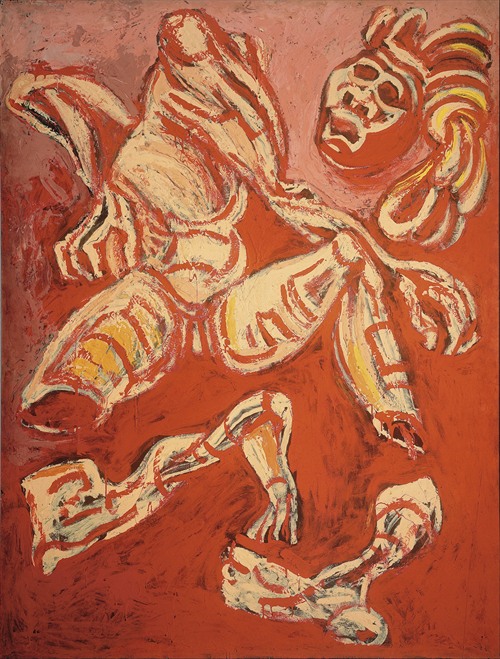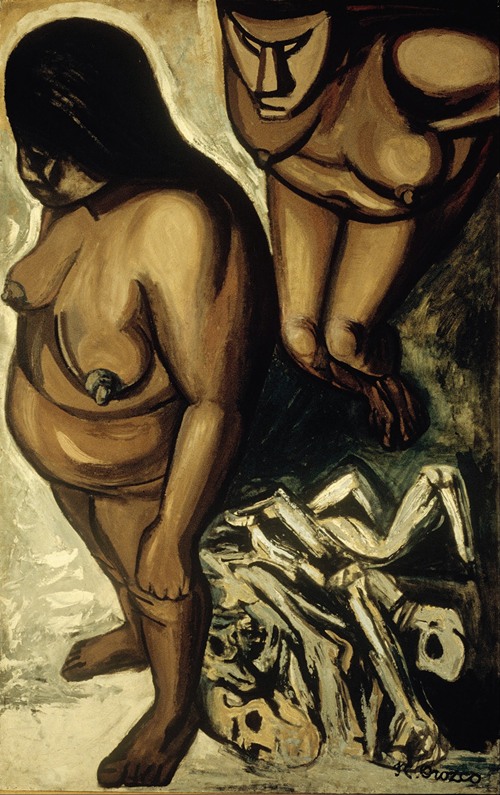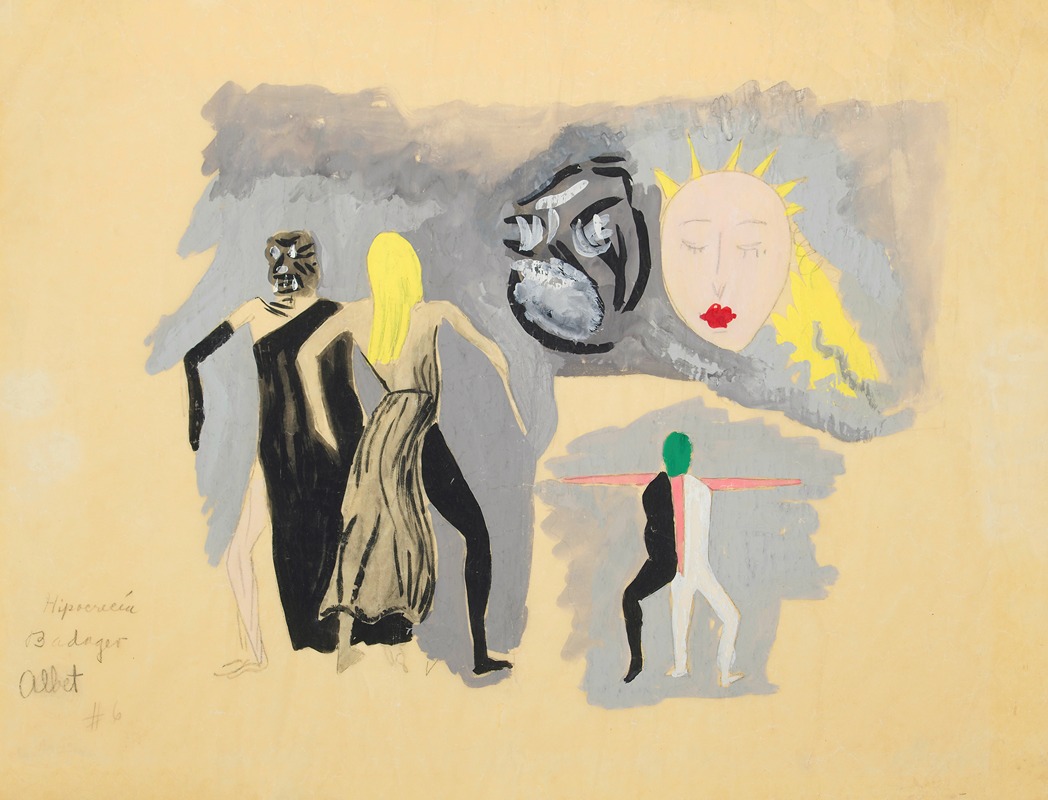
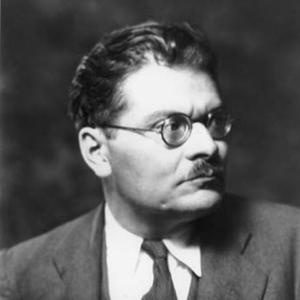
José Clemente Orozco was a Mexican caricaturist and painter, who specialized in political murals that established the Mexican Mural Renaissance together with murals by Diego Rivera, David Alfaro Siqueiros, and others. Orozco was the most complex of the Mexican muralists, fond of the theme of human suffering, but less realistic and more fascinated by machines than Rivera. Mostly influenced by Symbolism, he was also a genre painter and lithographer. Between 1922 and 1948, Orozco painted murals in Mexico City, Orizaba, Claremont, California, New York City, Hanover, New Hampshire, Guadalajara, Jalisco, and Jiquilpan, Michoacán. His drawings and paintings are exhibited by the Carrillo Gil Museum in Mexico City, and the Orozco Workshop-Museum in Guadalajara. Orozco was known for being a politically committed artist, and he promoted the political causes of peasants and workers.
José Clemente Orozco was born in 1883 in Zapotlán el Grande (now Ciudad Guzmán), Jalisco to Rosa de Flores Orozco. He was the oldest of his siblings. He married Margarita Valladares, and had three children. At the age of 21, Orozco lost his left hand while working with gunpowder to make fireworks.
The satirical illustrator José Guadalupe Posada, whose engravings about Mexican culture and politics challenged Mexicans to think differently about post-revolutionary Mexico, worked in full view of the public in shop windows located on the way Orozco went to school. In his autobiography, Orozco confesses, "I would stop [on my way to and from school] and spend a few enchanted minutes in watching [Posada]… This was the push that first set my imagination in motion and impelled me to cover paper with my earliest little figures; this was my awakening to the existence of the art of painting." He goes on to say that watching Posada's engraving decorated gave him his introduction to the use of color. After attending school for Agriculture and Architecture, Orozco studied art at the Academy of San Carlos. He worked as an illustrator for Mexico City newspapers, and directly as an illustrator for one of the Constitutionalist armies overseen by "First Chief" Venustiano Carranza. One of the greatest influences on Orozco in his adult years was Dr. Atl's view on Symbolism. In 1914, Orozco followed Dr. Atl to Orizaba when the competing armies whereabout to enter the city. When the revolutionary factions split in 1914 after Victoriano Huerta was ousted, Orozco supported Carranza and General Álvaro Obregón against Pancho Villa and Emiliano Zapata. The violence he witnessed profoundly affected his life and art. "The world was torn apart around us", he wrote in his autobiography. "Troop convoys passed on their way to slaughter. Trains were blown up."
In 1916, Orozco, disappointed by the review he received in Mexico about his art, went to the United States. Four years later Orozco came back to Mexico City and began working as a cartoonist. In July 1923, Orozco begun to work on his first mural project aided by Vasconcelos, he participated in the revolutionary war and his paintings reflected his view on the dark essence of the war.
With Diego Rivera, he was a leader of the artist movement known as Mexican Muralism. An important distinction he had from Rivera was his darker view of the Mexican Revolution. While Rivera was a bold, optimistic figure, touting the glory of the revolution, Orozco was less comfortable with the bloody toll the social movement was taking. Orozco is known as one of the 'Big Three' muralists along with Diego Rivera and David Alfaro Siqueiros. All three artists, as well as the painter Rufino Tamayo, experimented with fresco on large walls, and elevated the art of the mural.
Between 1922 and 1924, Orozco painted the murals Maternity, Man in Battle Against Nature, Christ Destroys His Cross, Destruction of the Old Order, The Aristocrats, The Trench and The Trinity at the National Preparatory School. Some of the murals were destroyed by Orozco himself, and later repainted. Others were vandalized by conservative students and practically destroyed. Thus, Orozco had to repaint many of them when he came back to the School in 1926. In 1925, he painted the mural Omniscience at Mexico City's House of Tiles. The following year, he painted a mural at the Industrial School in Orizaba, Veracruz.
Between 1927 and 1934 Orozco lived in the USA. Even after the fall of the stock market in 1929, his works were still in demand. From March to June 1930, at the invitation of the Pomona College Art Department, he painted what he noted was the "first fresco painted outside the country by a painter of the Contemporary Mexican School". The fresco, Prometheus (Prometeo del Pomona College), on the wall of a Pomona's Frary Dining Hall, was direct and personal at a time when murals were expected to be decorous and decorative, and has been called the first "modern" fresco in the United States. Later that year, he painted murals at the New School for Social Research, New York City, now known as The New School. One of his most famous murals is The Epic of American Civilization at Dartmouth College, New Hampshire, USA. It was painted between 1932 and 1934 and covers almost 300 m² (3200 square feet) in 24 panels. Its parts include: Migrations, Human Sacrifices, The Appearance of Quetzalcoatl, Corn Culture, Anglo-America, Hispano-America, Science and Modern Migration of the Spirit (another version of Christ Destroys His Cross). His work was also part of the art competition at the 1932 Summer Olympics.
After returning to Mexico, in 1934 Orozco painted a mural, The Catharsis, at the Palacio de Bellas Artes in Mexico City. Remaining in Mexico, Orozco painted in Guadalajara, Jalisco, the mural The People and Its Leaders in the Government Palace. The frescos for the Hospicio Cabañas, which are considered his masterpiece. In 1940 he painted at the Gabino Ortiz Library in Jiquilpan, Michoacán. Between 1942 and 1944 Orozco painted for the Hospital de Jesús in Mexico City. Orozco's 1948 Juárez Reborn huge portrait-mural was one of his last works.
In 1947, he illustrated the book The Pearl, by John Steinbeck.
Orozco died on September 7 in 1949 in Mexico City during his sleep. His death cause was heart failure
